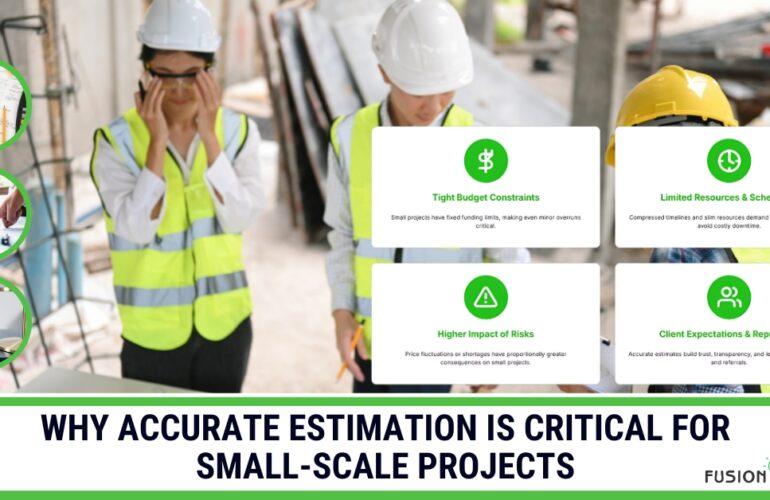Table of Contents
⚡ Electrical Takeoff Checklist — Everything Contractors Need for Accurate Bids
By Fusion Assist | Accurate Construction Estimates. Fast Turnaround. Real Results.
Introduction
In electrical contracting, every wire, fixture, and conduit counts.
A single missed item in your estimate can turn a profitable project into a loss. That’s why a structured electrical takeoff checklist is critical for any accurate bid.
Electrical systems are complex — covering lighting, power distribution, control systems, panels, wiring, and more. Whether you’re estimating for a residential building, commercial space, or industrial facility, a complete and organized takeoff ensures that every cost is captured before you submit your proposal.
At Fusion Assist, we help contractors across the U.S. streamline their estimating process with digital electrical takeoffs that deliver accuracy, speed, and confidence.
What Is an Electrical Takeoff?
An electrical takeoff is the process of quantifying all the electrical materials and components from project drawings and specifications.
It includes counting devices, measuring wire lengths, identifying breaker sizes, and summarizing labor and equipment needs.
A well-prepared takeoff gives you:
- Clear material quantities
- Accurate cost breakdowns
- Reduced waste and rework
- Reliable pricing for competitive bids
Why You Need a Checklist
Without a checklist, even experienced estimators can overlook items like control wiring, grounding, or mounting accessories.
A detailed electrical takeoff checklist helps you:
- Maintain consistency across projects
- Reduce errors and omissions
- Save time in review and quality control
- Improve coordination between estimating and purchasing teams
The Electrical Takeoff Checklist (Step-by-Step)
Use this as a standard guide for every electrical project, from small fit-outs to multi-story commercial jobs.
1. Review Drawings and Scope
- Confirm the latest issue of drawings (electrical, architectural, mechanical).
- Identify project scope, service voltage, and system type (residential, commercial, or industrial).
- Check for design alternates or value engineering notes.
- Highlight unclear areas to RFI (Request for Information) before proceeding.
2. Lighting System Takeoff
- Fixture types, counts, and mounting methods.
- Emergency and exit lighting.
- Lighting controls (dimmers, occupancy sensors, photocells).
- Decorative and specialty lighting.
- Cable tray or conduit routing for lighting circuits.
- Include fixture accessories and support hardware.
3. Power Distribution
- Main switchboards and panels.
- Circuit breakers, disconnects, and distribution boards.
- Transformers, generators, UPS systems.
- Feeders and branch circuits — calculate conductor sizes and lengths.
- Receptacles (general, dedicated, and special-use).
- Equipment connections (HVAC, kitchen, or machinery).
4. Wiring and Conduits
- Conduit sizes and runs (PVC, EMT, GRC, flexible).
- Wire and cable types (THHN, armored, data, fire alarm).
- Pull boxes and junction boxes.
- Grounding and bonding materials.
- Raceway fittings and supports.
5. Controls, Fire, and Communication Systems
- Fire alarm devices, control panels, and notification appliances.
- Data and communication outlets.
- Security cameras, access control, and intercom systems.
- Building automation systems.
- Control wiring for HVAC, pumps, and lighting automation.
6. Equipment and Special Systems
- Motor control centers (MCCs).
- VFDs (Variable Frequency Drives).
- Solar PV systems and inverters.
- Lightning protection systems.
- Generators and ATS panels.
- Specialized equipment power feeds.
7. Testing, Commissioning, and Accessories
- Testing and calibration devices.
- Labeling and identification materials.
- Spare parts and warranties.
- Mounting hardware and supports.
- Safety signage and barriers.
8. Labor, Overheads, and Contingency
- Labor hours per unit or per circuit length.
- Installation difficulty factors (height, congestion, safety).
- Site access, temporary power, and permits.
- Allowance for price escalation or material lead times.
- Subcontract or specialty vendor costs.
Electrical Takeoff Checklist Summary Table
| Category | Key Items to Include |
|---|---|
| Lighting | Fixtures, controls, emergency lights |
| Power | Panels, circuits, outlets, feeders |
| Wiring | Conduits, cables, boxes, fittings |
| Controls & Fire | Alarm, automation, data, CCTV |
| Equipment | MCCs, generators, solar, VFDs |
| Testing | Labels, calibration, spare parts |
| Labor & Overheads | Man-hours, permits, temporary power |
Common Mistakes to Avoid
❌ Missing hidden items like junction boxes or supports
❌ Forgetting accessories (connectors, clamps, anchors)
❌ Double-counting fixtures on combined layouts
❌ Ignoring code changes that affect conductor sizes
❌ Not coordinating with mechanical and architectural drawings
A simple oversight can lead to underestimated bids or profit loss — making a disciplined checklist approach essential.
Digital vs. Manual Electrical Takeoff
| Aspect | Manual Takeoff | Digital Takeoff |
|---|---|---|
| Speed | Slow, paper-based counting | Fast, automated area & count tools |
| Accuracy | Human error risk | Software precision |
| Revisions | Redo entire sheets | Update with version control |
| Collaboration | Limited | Cloud-sharing with teams |
| Integration | Manual data entry | Exports to estimating software |
Fusion Assist uses digital takeoff technology for every electrical estimate — reducing errors, increasing bid capacity, and ensuring your proposal is ready in 24–48 hours.
How Fusion Assist Simplifies Electrical Takeoffs
Our electrical estimators follow a proven workflow:
- Upload your drawings (PDF, DWG, or blueprint scans).
- We perform digital quantity takeoffs using calibrated software.
- Cross-verify quantities using standardized checklists.
- Deliver a fully organized Excel or PDF estimate ready for pricing and submission.
Every takeoff is quality-checked by professionals with real-world construction experience, ensuring your bids are complete, compliant, and competitive.
Internal Links
Conclusion
Electrical estimating requires precision, consistency, and time — but with the right checklist, you can cut errors and improve accuracy on every bid.
Whether you manage in-house estimates or outsource them, using a detailed electrical takeoff checklist ensures no item is missed and no opportunity is lost.
With Fusion Assist, you get digital accuracy, expert verification, and a 24–48-hour turnaround — all designed to help contractors win more bids profitably.
Get your next electrical takeoff done by experts.
Upload your drawings today for a fast, accurate estimate.




